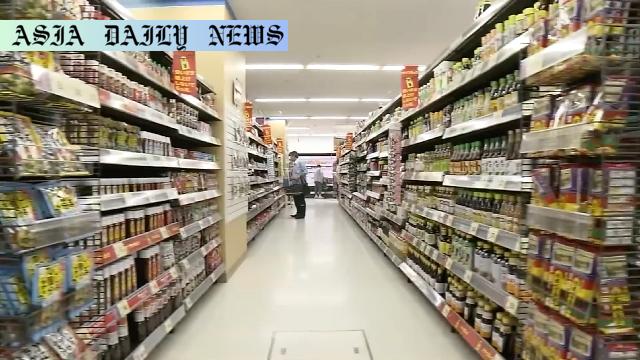Food Inflation – Prices for over 1,000 food items in Japan are rising in August due to soaring ingredient and production costs.
- Food Inflation is driving up prices of over 1,000 items in Japan this August.
- Seasonings and dairy products see the highest price increases.
- Surging ingredient and production costs are primary drivers.
- Inflation trend expected to persist, affecting more items by 2024.

Japan Faces Accelerated Food Inflation in August
In Japan, the rise in food prices has become a growing concern, with over 1,000 products experiencing significant cost hikes as early as August. A private research firm, Teikoku Databank, conducted a survey involving 195 major food manufacturers, uncovering an average price increase of 11% for staples and processed foods. This alarming trend has been consistent for the eighth consecutive month, underscoring the persistent challenge of food inflation gripping the country.
Seasonings such as spices and broths lead the price surge, accounting for approximately 470 products in total. Meanwhile, dairy items, including milk and yoghurt, as well as processed food products like frozen meals, are also significantly impacted. The increase in production costs, coupled with soaring ingredient prices, has created a perfect storm for price hikes across the food industry. With no immediate signs of relief, experts anticipate that food inflation will remain a challenging trend in the coming months.
A Widespread and Prolonged Economic Strain
This rising trend in food prices is not expected to ease anytime soon. According to Teikoku Databank, over 19,000 food items could face price hikes by November, surpassing 2024’s forecasted figures by 50%. The research also highlights that October will likely see more than 3,000 items subject to increased costs. This marks October’s projected figures as the second highest since April this year. Such trends underline the prolonged and deepening impact of inflation on both manufacturers and consumers in Japan.
Notably, while the driving forces behind this economic strain remain largely external—such as increased material costs and higher production expenses—internal responses by manufacturers are shaping the narrative. Many companies are implementing anticipatory measures to accommodate further cost surges. While these short-term solutions aim to ensure sustainability in production, they inevitably contribute to the final cost incurred by consumers at supermarkets and retail stores.
Implications for Consumers and the Economy
The continual rise in food prices in Japan has several implications for consumers and the broader economy. For households, these increases translate into heavier financial burdens, prompting many to reevaluate their spending habits. From prioritizing alternative goods to reducing consumption of certain products, families must navigate inflation-induced pressures. This could lead to long-term changes in how Japanese consumers manage grocery purchases and other essentials.
On a larger scale, the persistent inflationary trend risks slowing down economic recovery in Japan. As disposable incomes shrink due to heightened living costs, consumer confidence remains low. Industries reliant on discretionary spending could also feel residual effects, as consumers pull back from non-essential purchases. Policymakers may need to step in and adopt measures to address inflation without adding pressure to the fiscal landscape.
Despite these challenges, businesses may also find opportunities to innovate within this constrained economic environment. Whether by modifying product lines, diversifying raw material sourcing, or adapting to consumer demands, companies have an opportunity to thrive, even amidst adversity.



Commentary
Reflecting on the Persistence of Food Inflation
The recent surge in food prices in Japan reflects an increasingly complex web of economic challenges that have far-reaching consequences for consumers and industries alike. This situation sheds light on the importance of understanding how inflation impacts everyday lives, especially in the context of basic necessities such as food. While external factors like ingredient shortages and supply chain disruptions significantly contribute to inflation, the ripple effect is felt most profoundly at the consumer level.
The Struggles Faced by Households
Households in Japan are undoubtedly grappling with the effects of rising living costs, particularly those with fixed incomes or limited resources. The need to make difficult choices between essential purchases becomes more pronounced as items that were once staples grow less affordable. This not only disrupts basic consumption habits but also creates a sense of uncertainty and financial strain that could linger for years to come. It stands as a call for policymakers to address this pressing issue in a balanced and strategic manner.
Opportunities Amidst Adversity
Despite the challenges presented by the rising cost of food, there is room for innovative approaches and proactive measures to mitigate its impact. For instance, fostering collaborations among food manufacturers to explore cost-effective production methods could create sustainability within the sector. Furthermore, empowering consumers with better access to affordable alternatives could alleviate some of the economic strain. In times of persistent inflation, adaptive measures by both industries and governments will play a crucial role in balancing the economic landscape.
In conclusion, Japan’s battle with food inflation serves as a timely reminder of the interconnected nature of global and local economies. By fostering resilience and adaptability across all sectors, it is possible to navigate this turbulent period and emerge with stronger, more sustainable economic practices.